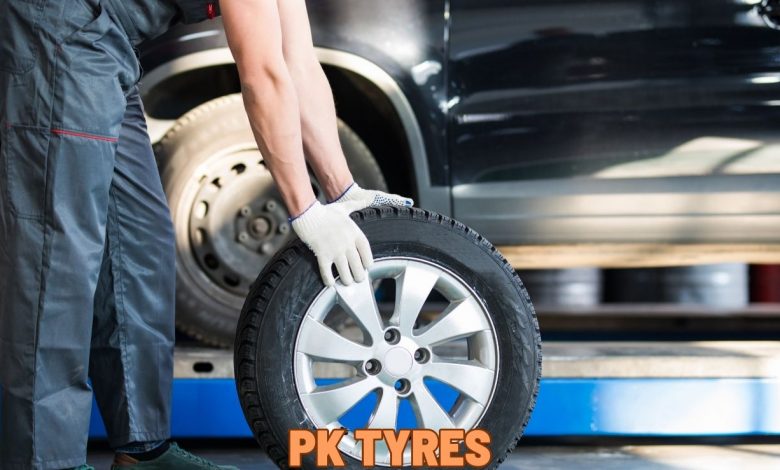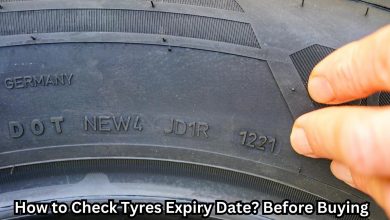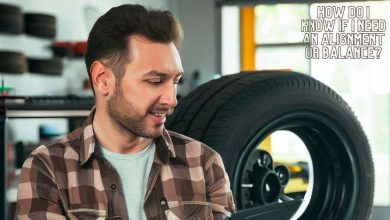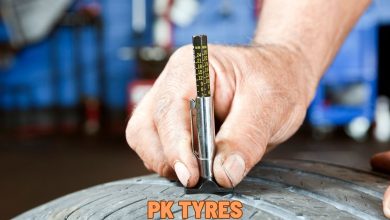왜 하나가 아닌 두 개의 타이어를 교체해야 합니까?

도로에서 안전을 유지하려면 타이어를 좋은 상태로 유지하는 것이 매우 중요합니다. 타이어는 도로에 닿는 자동차의 유일한 부분이므로 자동차가 도로를 얼마나 잘 접지하고, 조종하고, 정지할 수 있는지에 영향을 미칩니다. 정기적인 유지 관리를 수행하고 필요할 때 오래된 타이어를 교체하면 타이어의 모양을 좋은 상태로 유지하고 수명을 연장하며 안전을 유지하는 데 도움이 됩니다.
타이어를 잘 관리하려면 타이어에 공기가 얼마나 들어 있는지 확인하고, 트레드(타이어의 울퉁불퉁한 부분)가 어떻게 마모되는지 살펴보고, 손상이 있거나 마모된 부분이 있으면 신속하게 수리해야 합니다. 타이어에 적절한 양의 공기를 유지하면 휘발유를 절약하는 데 도움이 되고 타이어 수명이 길어지며 균일하게 마모됩니다. 또한 타이어를 이리저리 움직이고 정렬하면 마모가 고르게 분산되어 타이어의 성능이 향상되고 수명이 길어집니다.
가장 큰 질문: 타이어 한 개를 교체해야 할까요, 아니면 두 개를 교체해야 할까요?
새 타이어가 필요할 때 큰 논쟁이 있습니다. 타이어 하나만 교체해야 할까요, 아니면 동시에 둘 다 교체해야 할까요? 불량 타이어만 교체하는 것이 더 저렴해 보일 수도 있지만, 타이어 두 개를 동시에 교체하는 것이 일반적으로 더 나은 아이디어인 데는 그럴 만한 이유가 있습니다.
두 개의 타이어를 교체하면 모든 타이어의 트레드(울퉁불퉁한 부분)의 양이 동일하고 동일한 방식으로 작동하는지 확인됩니다. 트레드가 다른 다양한 타이어를 사용하면 자동차가 도로를 접지하는 방식과 핸들링이 엉망이 되어 운전의 안정성과 안전성이 떨어질 수 있습니다. 타이어가 일치하지 않으면 자동차의 구동계에 많은 스트레스를 가하고 작동 방식이 엉망이 될 수 있기 때문에 자동차에 전륜 구동 또는 사륜 구동이 있는 경우 이는 특히 중요합니다.
또한 한 번에 두 개의 타이어를 교체하면 특히 도로가 젖어 있거나 눈이 오거나 미끄러울 때 차량 제어력을 향상하는 데 도움이 됩니다. 모든 타이어가 동일한 방식으로 도로를 접지하면 차량을 보다 쉽게 조향하고 정지할 수 있어 사고나 미끄러짐의 가능성이 줄어듭니다.
타이어가 어떻게 마모되고 자동차에 영향을 미치는지 이해하기
타이어는 영원히 지속되지 않으며 운전 방식, 도로 상태, 관리 방식 등 다양한 이유로 마모될 수 있습니다. 브레이크를 밟거나 급회전하는 등 공격적으로 운전하면 타이어가 더 빨리 마모될 수 있습니다. 움푹 들어간 곳이나 잔해물이 있는 거친 도로에서도 타이어가 손상되고 고르지 않게 마모될 수 있습니다. 타이어 트레드의 깊이와 전체적인 상태를 정기적으로 점검하여 마모 징후와 발생할 수 있는 문제를 찾아내는 것이 중요합니다.
특히 도로가 젖어 있거나 얼어붙은 경우에는 타이어 트레드의 깊이가 매우 중요합니다. 타이어의 패턴은 물이 흘러내리는 데 도움을 주어 타이어가 도로를 잘 접지할 수 있게 해줍니다. 그러나 시간이 지남에 따라 트레드가 마모됨에 따라 타이어는 물을 분산시킬 수 없으므로 젖은 도로에서 제어력을 잃고 미끄러지기 쉽습니다.
고르지 않은 타이어 마모가 자동차 성능에 미치는 영향
고르지 못한 타이어 마모는 자동차 성능과 운전 안전성에 심각한 영향을 미칠 수 있습니다. 타이어가 고르지 않게 마모되면 트레드에 이상한 패턴이 생길 수 있으며 이로 인해 도로에서 접지력을 잃게 됩니다. 이로 인해 자동차 핸들링이 엉망이 되고, 반응성이 떨어지며, 브레이크를 밟을 때 정지하는 데 시간이 더 오래 걸릴 수 있습니다.
게다가 한 타이어의 트레드가 다른 타이어보다 훨씬 적다면 자동차가 도로를 얼마나 잘 접지하고 얼마나 안정적인지 망칠 수 있습니다. 방향을 바꾸거나 빠르게 움직여야 할 때, 트레드가 적은 타이어는 다른 타이어보다 먼저 접지력을 잃을 수 있으며, 이로 인해 자동차가 예측할 수 없거나 심지어 위험할 수도 있습니다.
타이어 그립과 도로 안전의 연관성
타이어가 도로를 얼마나 잘 접지하는지는 운전 중 안전에 직접적인 영향을 미칩니다. 좋은 그립은 속도를 높이거나 낮추거나 모퉁이를 돌 때 제어력을 유지하는 데 도움이 됩니다. 트레드가 낮거나 마모 패턴이 고르지 않은 타이어는 접지력이 좋지 않아 특히 도로가 젖어 있거나 미끄러울 때 미끄러지거나 통제력을 잃기 쉽습니다.
좋은 그립을 갖는 것은 제동에도 중요합니다. 마모된 타이어는 차량을 신속하게 정지시킬 만큼 도로를 접지력을 발휘하지 못하여 사고로 이어질 수 있습니다. 귀하와 승객의 안전을 유지하려면 타이어를 정기적으로 점검하고 필요할 때 교체하여 타이어 접지력이 좋은지 확인하는 것이 중요합니다.
타이어 하나만 교체하는 것의 위험성
타이어 하나만 교체하면 자동차의 도로 접지력과 핸들링 방식이 엉망이 될 수 있습니다. 새 타이어는 기존 타이어와 트레드의 양이 다르기 때문에 그립이 다를 수 있습니다. 그립의 불균형으로 인해 차량의 안정성이 떨어지고 제어하기가 더 어려워질 수 있습니다. 비상 정지나 급회전과 같이 그립이 필요할 때 자동차가 예측할 수 없이 작동하여 사고 가능성이 높아질 수 있습니다.
남은 타이어에 가해지는 스트레스
타이어 하나만 교체하면 다른 타이어에 더 많은 스트레스가 가해집니다. 새 타이어가 조금 더 크기 때문에 다른 속도로 회전합니다. 이로 인해 차동 장치나 트랜스퍼 케이스와 같이 자동차를 움직이게 하는 부품이 변형되어 더 빨리 마모될 수 있습니다. 이러한 부품을 수리하는 데 비용이 많이 들 수 있습니다.
악천후로 인한 안전성 저하
비가 오거나 눈이 오거나 얼어붙을 때와 같이 날씨가 좋지 않을 때, 일치하지 않는 타이어를 사용하는 것은 안전하지 않습니다. 타이어 접지력 수준이 다르면 자동차가 불안정해지고 핸들링이 어려워져 통제력을 잃을 가능성이 커집니다. 까다로운 도로 상황에서 안전한 운전을 위해서는 좋은 타이어 그립이 매우 중요합니다.
두 개의 타이어를 함께 교체할 때의 이점
두 개의 타이어를 동시에 교체한다는 것은 두 타이어의 트레드 깊이, 트레드 패턴 및 타이어 품질이 동일하다는 것을 의미합니다. 이를 통해 타이어 성능이 전반적으로 향상되어 접지력, 핸들링 및 제동력이 향상됩니다. 두 개의 좋은 타이어를 사용하면 자동차가 더 부드럽게 달리고 더 안전해지며, 안정성과 반응성이 향상됩니다.
더 나은 자동차 안정성과 핸들링
두 개의 타이어를 함께 교체하면 차량이 더욱 안정적이고 다루기 쉬워집니다. 모든 타이어가 균일하면 자동차의 무게 분포가 동일하게 유지되어 회전 중에 흔들리거나 통제력을 잃을 가능성이 줄어듭니다. 자동차를 제어하고 운전하는 방법은 자동차의 안전성에 영향을 미칩니다. 좋은 그립감과 견인력은 제어력을 유지하고 자신감을 갖게 하여 사고 위험을 낮추는 데 도움이 됩니다.
장기적으로 비용 절감
한 번에 두 개의 타이어를 교체하는 것은 초기 비용이 더 큰 것처럼 보일 수 있지만 장기적으로는 비용을 절약할 수 있습니다. 타이어를 모두 함께 교체하는 것이 좋습니다. 이렇게 하면 균일하게 마모되고 더 오래 지속됩니다. 또한 적절한 타이어 관리와 적시 교체는 마모되거나 손상된 타이어로 인해 발생하는 수리 비용이나 사고의 가능성을 줄여줍니다.
더욱이, 타이어가 잘 작동하고 안전을 유지한다면 사고가 발생할 가능성이 줄어듭니다. 이는 의료비, 보험 또는 자동차 수리에 많은 돈을 쓸 필요가 없다는 것을 의미합니다. 타이어 두 개를 바꾸는 것부터 시작하면 위험을 낮추고 자동차 수명을 연장하며 향후 비용을 절약할 수 있습니다.
전문가의 조언: 타이어 교체 권장사항 따르기
업계 지침은 타이어 교체 시기에 대한 귀중한 조언을 제공합니다. 이러한 지침에서는 타이어가 특정 지점까지 마모되면 타이어 교체를 제안하는 경우가 많으며, 이는 일반적으로 트레드 마모 표시로 표시됩니다. 이러한 권장 사항을 따르면 타이어 성능이 좋고 안전하며 업계 표준을 충족할 수 있습니다. 타이어 제조업체의 지침을 알아보거나 자동차 설명서를 참조하여 도움을 받는 것이 중요합니다.
새 타이어를 구입할 때 고려해야 할 사항
자동차용 새 타이어를 구입할 때 염두에 두어야 할 몇 가지 중요한 사항이 있습니다.
- 트레드 마모: 타이어의 울퉁불퉁한 부분(트레드)이 얼마나 남아 있는지 확인하십시오. 많이 닳았거나 이상한 무늬가 나타나면 타이어를 교체할 시기입니다. 또한 손상된 부분이 보이면 교체가 필요하다는 신호입니다.
- 타이어 수명: 타이어는 많이 사용하지 않아도 오래될 수 있습니다. 그러니 당신이 그것을 얼마나 오랫동안 가지고 있었는지 생각해보십시오. 오래된 타이어에는 문제가 생기기 시작하고 제대로 작동하지 않을 수도 있습니다.
- 타이어 종류: 귀하의 자동차에 적합한 타이어 종류와 운전 방식에 대해 생각해 보십시오. 더운 곳이나 추운 곳에서 운전하시나요? 도로가 거칠거나 부드럽나요? 이러한 사항을 알면 성능, 연료 절약, 다양한 지형 처리에 좋은 타이어와 같은 올바른 타이어를 선택하는 데 도움이 됩니다.
- 어울리는 타이어: 가능하다면 보유하고 있는 타이어와 동일한 브랜드, 모델, 유형의 타이어를 구입해 보세요. 이렇게 하면 자동차가 제대로 작동하고 더 안전해집니다.
- 예산: 지출할 금액을 생각하는 것이 중요하지만 단지 가장 저렴한 타이어를 선택하지 마십시오. 좋은 타이어는 더 오래 지속되고 더 잘 작동하기 때문에 안전을 유지하고 장기적으로 비용을 절약할 수 있습니다. 따라서 예산과 안전 및 품질의 균형을 맞추십시오.
- Car Continental 또는 Yokohama에 가장 적합한 타이어는 무엇입니까?
전문가 상담의 중요성
타이어 교체 시에는 전문 타이어 딜러나 정비사와 상담하는 것이 좋습니다. 그들은 당신의 차에 관해 좋은 조언을 해줄 수 있습니다. 그들은 귀하의 자동차에 필요한 사항, 운전 방법 및 해당 지역에서 요구하는 사항을 고려할 것입니다. 전문가는 올바른 타이어 선택, 올바른 설치, 정렬이나 회전과 같은 관련 서비스 수행에 도움을 줄 수 있습니다. 그들의 전문 지식은 귀하가 정보에 입각한 결정을 내리고 타이어 교체 요구 사항에 대해 가능한 최상의 권장 사항을 받을 수 있도록 보장합니다.
결론:
최적의 안전과 성능을 위해서는 타이어 1개 대신 2개를 교체하는 것이 현명합니다. 이는 좋은 접지력을 유지하고 다른 타이어의 부담을 완화하며 거친 조건에서의 주행을 향상시키는 데 도움이 됩니다. 새 타이어를 구입할 때는 규칙을 따르고, 중요한 사항에 대해 생각하고, 전문가에게 조언을 구하는 것이 현명합니다. 이는 올바른 결정을 내리는 데 도움이 됩니다. 타이어를 잘 관리하고 필요할 때 교체하십시오. 이렇게 하면 운전이 더욱 안전해지고, 타이어 수명이 연장되며, 승차감이 더욱 부드러워집니다.
자주 묻는 질문:
타이어가 손상되거나 마모된 경우 타이어 하나만 교체할 수 있나요?
타이어 하나만 교체하는 것이 유혹적일 수 있지만 동시에 두 개를 교체하는 것이 더 좋습니다. 타이어가 맞지 않으면 자동차의 접지력, 핸들링 및 안정성이 엉망이 될 수 있습니다. 이는 안전하지 않으며 자동차 성능에 영향을 미칠 수 있습니다.
타이어는 언제 교체해야 하나요?
타이어 트레드가 너무 낮아지거나 고르게 마모되지 않으면 타이어를 교체해야 합니다. 이는 일반적으로 타이어 교체를 권장하는 경우입니다. 권장 사항은 지침과 차량 설명서를 확인하세요. 그것은 매우 중요합니다!
다른 타이어 브랜드나 모델을 혼합할 수 있나요?
타이어를 동일한 브랜드, 모델, 사양과 일치시키는 것이 이상적입니다. 그러나 때로는 브랜드나 모델을 혼합해도 괜찮습니다. 그러나 호환성과 성능을 보장하기 위해서는 전문가와 상담하는 것이 중요합니다.
타이어 관련 서비스를 받으려면 얼마나 자주 전문가에게 문의해야 합니까?
타이어가 잘 작동하도록 정기적으로 타이어 판매점이나 정비사를 방문하는 것이 좋습니다. 유지 관리, 검사, 정렬 및 회전에 도움을 줄 수 있습니다. 타이어 상태를 평가하고 권장 사항을 제공하며 타이어 관련 우려 사항이나 문제를 해결할 수 있습니다.
타이어 교체에 적합한 트레드 깊이를 어떻게 결정할 수 있나요?
트레드 깊이 게이지나 동전을 사용하여 타이어 교체가 필요한지 확인할 수 있습니다. 게이지를 사용하려면 타이어의 다양한 위치에서 트레드 깊이를 측정하세요. 타이어 트레드가 권장 깊이에 가까우거나 그보다 낮으면 교체할 시기입니다.




